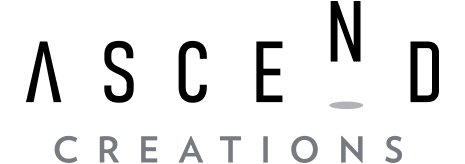Keep Your Brand Guidelines On Track...Long-term
Ascend Creations Makes Long Lasting, Easy-To-Use, Brand Guidelines
Why you need clear brand guidelines
A brand guidelines deck, otherwise known as a brand style guide, is a standard document that helps establish the visual goals and direction of the entire branding process. Think of it as a rulebook that coordinates how a brand’s identity should be represented…and how it survives intact over time.
These guidelines are ultimately an organized foundation to unify the ways a brand communicates with its various audiences. Hopefully, yielding a unique brand that is consistent, desirable, and memorable.
The Ascend Creations team is here to help identify and document, in a guide, the branding style that resonates most with your intended audiences.
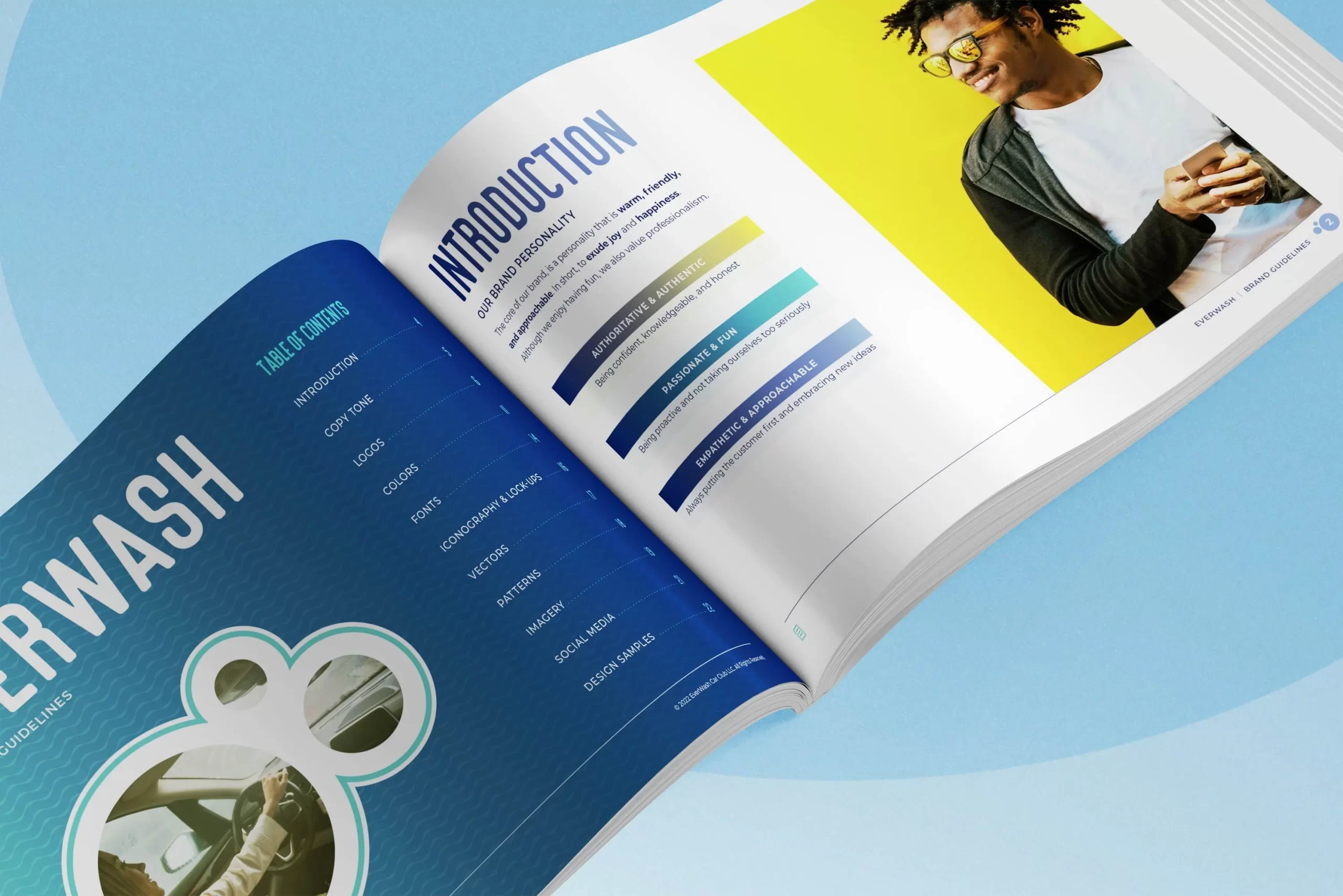
Standard guideline sections
A brand guide is an important tool for maintaining brand consistency across all touch points. The brand guide should include all of the necessary information to help maintain a brand’s vision. This includes specifying certain brand colors, brand fonts, and logo usage. By implementing a brand guide it allows your customers to easily recognize your company’s brand, no matter where they encounter it.
Cover

Logo Overview

Logo Color Variations

Logo Size & Clear Space

Logo Useage

Brand Colors

Headline Fonts
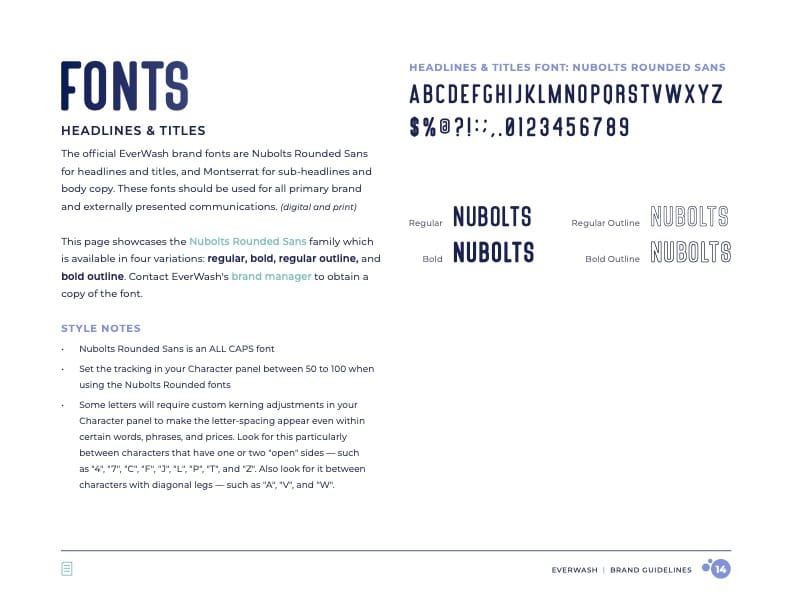
Subheading & Body Fonts

OPTIONAL ADD-ONS
Having brand standards shows that you are committed to quality and care about the details. This can instill confidence in both customers and prospects, and ultimately lead to more business. So, if you’re looking to create a stronger, more unified brand identity, consider implementing brand standards across all of your visuals to allow them to be presented consistently. It’s an important detail that can make a big difference.
Table of Contents

Brand Personality

Copy Tone (Tone of Voice)

Secondary Logos
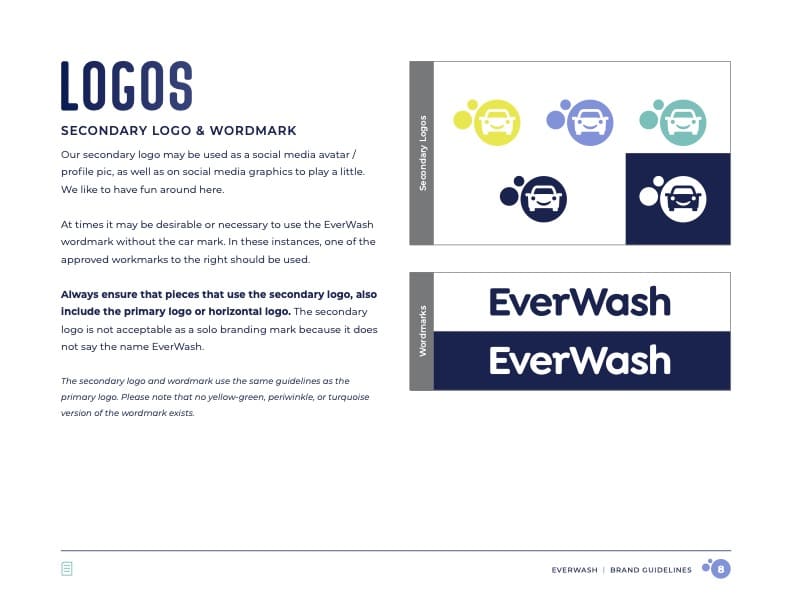
Secondary Colors
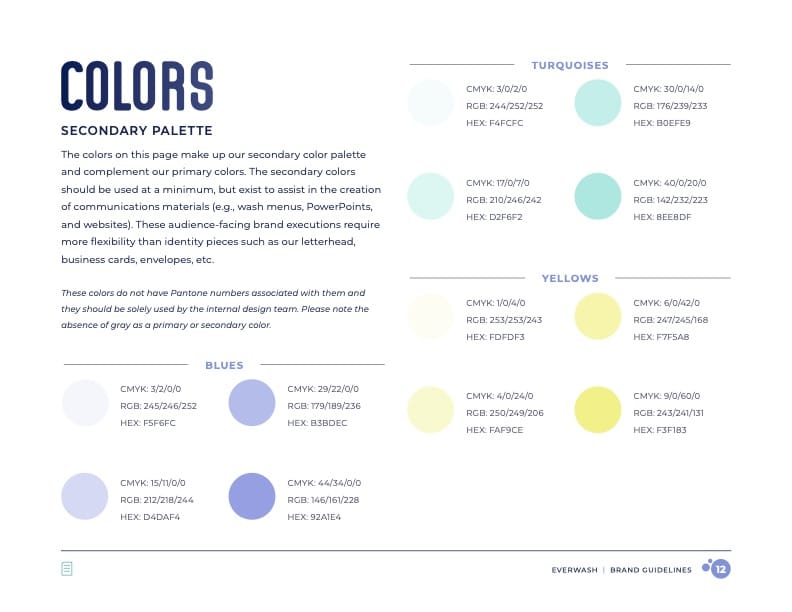
Gradients

Iconography
Vectors

Patterns
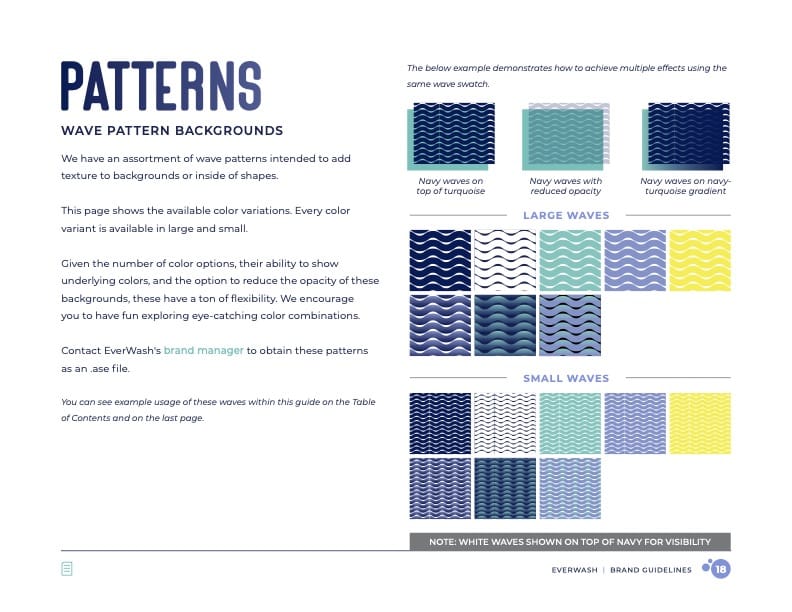
Photography Standards
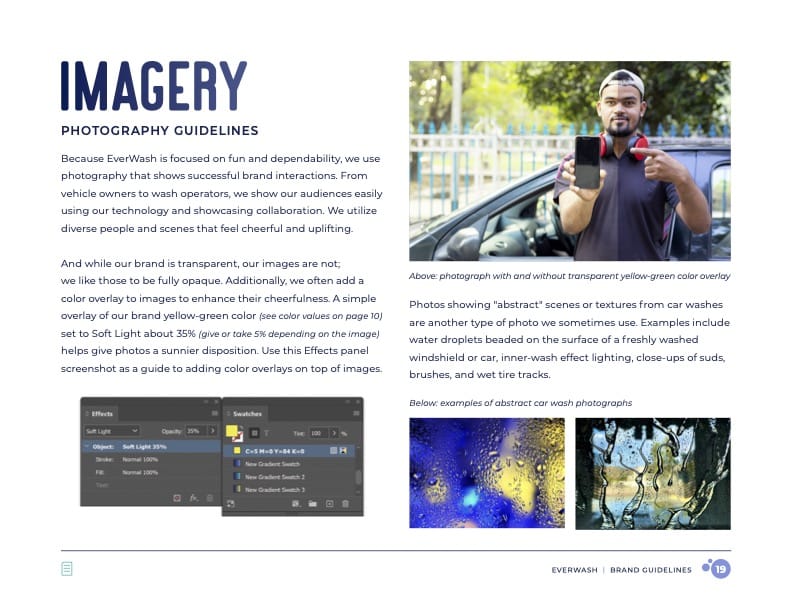
Illustration Standards
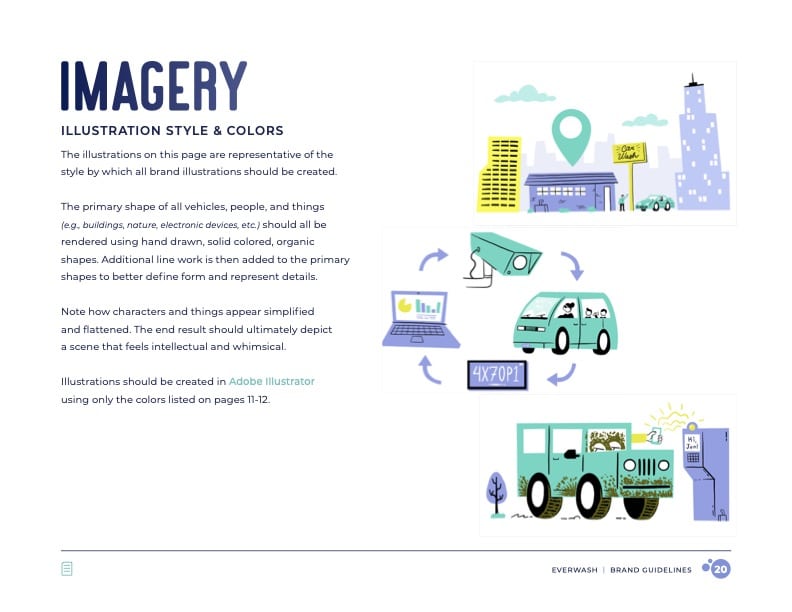
Social Media Standards

Design Samples

Back Cover

Brand Guideline Pricing
Standard Guidelines
- Custom Cover Design
- Logo Overview
- Logo Color Variations
- Logo Size Guidelines
- Logo Usage
- Brand Colors
- Headlines & Titles
- Subs Headings & Body
1 Payment Of
$2500
In most cases the standard sections plus a couple more al-la-carte sections will last your organization for years to come. You can also always add additional sections at a later date.
A La Carte Sections
- Table of Contents
- Brand Personality
- Copy Tone
- Secondary Logo
- Secondary Colors
- Gradients
- Iconography
- Vectors
- Patterns
- Photography
- Illustration
- Social Media
- Design Samples
- Other (Upon Request)
Add Additional Sections For
$100 / ea
Why creating brand guidelines is important for your company.
Let’s start with this note; What memorable brand comes to your mind whenever you fantasize about your favorite snack or drink? You probably remember exactly what the package looks like, the color scheme, the font style used in its name, or what the company logo represents. Right?! These are all included in its brand identity guidelines. And guess what? A brand cannot be separated from these elements.
Every business should pay attention to its brand identity because its products or services will always be associated with it. It also remains an essential feature in every marketing and promotion strategy.
Therefore, businesses should make a maximum effort to attain unique branding tools with clearly defined rules. Successfully crafted brand guidelines will last years if not decades if done right. As a result, clients should select the best partner to help in the branding process.
To assist you and your business, we will guide you through the process to create brand guidelines for your company. What’s included in your own brand guidelines will help you create your brand essence. This will guarantee you and your company only the best long term experience.
But before that, let’s discuss what exactly the purpose of brand guidelines are for your company to be successful.
What exactly are brand guides and style guides?
To help establish a ‘brand’s voice, story, and image,’ a collection of digital and physical resources is an essential tool. This collection, however, signifies a single concept and focuses on the same goal.
Brand guides focus on the appearance of digital, physical, printed, and visual resources that represent a brand’s identity. It consists of a group of individual elements united by the same focus, concept, and idea.
Consistency of this set of elements is what makes up your company’s identity and brand story. It is what helps communicate the message that needs to be passed across to the intended audience. This means that every element must be united with a single vision.
While it is essential in different situations and for a good number of reasons. Here are some examples of where brand guidelines should be considered inevitable to include;
- Start-ups: When a new business decides to go live or enter the market and need help setting their brand’s personality.
- Re-branding or Refresh an Existing Brand: Overhauling a brand’s past essence or tweaking the current brand.
- Promotion Launch: Defining the visual direction of new marketing material to gain more customers or an additional audience.
Style choices SHOULD convey meaning
What is included in your branding guide?
Make sure that it's more than just a LOGO!
When you hire a graphic designer or agency that offers branding services, they will be able to tell you which elements (or sections) are included in each package.
A standard brand guide should consist of a brand’s logo usage, color palette, fonts, and generally a visual identity at its bare minimum. Other elements of the guide are rarely used brand assets but make up a significant part of the package because when the brand assets are used you want everyone, from your copywriters to 3rd party vendors, on the same page.
A professional and skilled design company and its creative team will also ensure that it looks into your marketing / promotional strategy, competitor companies’ branding, and customer experience preferences. After concrete research into all these, it becomes easier to create brand guidelines that sufficiently relate to the goal of the business and will allow for brand consistency.
The 'why' behind CERTAIN SECTIONS
Why should you include brand colors in your brand guidelines?
Color palette is one of the very first components to help identify your brand. For this reason, Ascend Creations includes a primary color palette in all brand guidelines.
Selecting the right colors for your audience(s) is an important step in creating a brand that “feels right” for your market. We combine data collected from market research, client input, and color theory to yield a combination of colors that you’ll be confident in.
Additionally, this service is essential for small businesses that intend to make their brand a high-class business via its marketing strategies. It is a crucial and delicate step in the branding process, and this means a professional is best to employ in order to handle this color selection process.
Why should you include brand fonts in your brand guidelines?
The positive impact that typography has on your brand cannot be understated. Using legible, modern font options helps you better communicate and connect to your intended audiences. Different styles of fonts convey different personalities. So it’s important to ensure your brand’s fonts match your brand’s intended personality. Ascend Creations is an expert in this process and would like to help you in this area.
Why should you include logo usage rules in your brand guidelines?
Almost all brand guidelines (complete or incomplete) include the logo design and rules as their primary component. The company logo remains an irreplaceable part of all customer experience as it is the cornerstone of the visual brand identity.
More about your branding guideline add-ons
Why should you include an introduction section in your brand guidelines?
In short, you may not be in the room when a future marketer or advertiser is reviewing your guidelines! An introduction page is important in brand guidelines for several reasons. First, it helps to introduce the company to readers and familiarize them with the brand. This is especially helpful for new employees or those who are not familiar with the company’s history.
Second, an introduction page can serve as a valuable reference point for the company’s core values, mission statement, goals, and brand story. This can be helpful for any internal team when making decisions about how to represent the company to customers or the public. Finally, an About Us page provides a space for the company to showcase its personality to help build relationships with consumers. This messaging can help create a loyal customer base and increase brand awareness. Overall, including an introduction page when creating brand guidelines for your company is a great way to ensure that your company name is accurately and effectively represented to both internal and external audiences.
Why should you include copy tone (brand persona) section in your brand guidelines?
Addressing copy tone in your brand guidelines is important because it helps ensure that all copy associated with your brand uses the same personality. It helps standardize your brand voice and makes it easier for customers to recognize and trust your brand.
Having a unified tone also makes it easier for you to control how your brand is perceived. By carefully crafting the tone of your copy, you can convey the desired image and values of your brand.
A well-defined tone of voice can also make your brand seem more human and approachable. This can be especially useful if you want to build closer relationships with your customers.
Why should you include a photography section in your brand guidelines?
- A photography standards section helps ensure that all images used in marketing and communications materials is cohesive and portrays brand consistency.
- It can be a valuable reference for creative professionals, such as designers and ad agencies, who are often tasked with sourcing or creating photography for your brand which allows for a consistent experience across all your platforms.
- A photography standards section can also help save time and avoid frustration by clearly outlining what is and isn’t allowed in terms of photography usage. It allows you to specify whether you want motion pictures such as videos or gifs, or if you want stationary pictures such as photographs or quirky product shots.
- In short, including a photography standards page in your brand guidelines is a smart way to protect and maintain the visual integrity of your brand and brand elements for example, images that have a lot of white space and come across as airy and clean or images that have dark backgrounds that come across as serious and determined.
Why should you include an illustration section in your brand guidelines?
Having an illustration standards page in your brand guidelines is important for a number of reasons. First, it helps to ensure that all of your illustrations are consistently high quality and on-brand. Illustrations are a fun way to incorporate your brand’s color palettes.
Second, it can help to save time and money by reducing the need for revisions and reprints.
Third, it helps to protect your brand identity by ensuring that only approved illustrations are used. These illustrations should match your brand, for example the illustrations can have white space or have an edgy design.
Finally, an illustration standards section can help to inspire creativity by providing a set of parameters for illustrators to work within.
Why should you include an iconography section in your brand guidelines?
An icon is a graphical representation of an object, person, or idea. In the world of branding and design, icons play a crucial role in identity and communication.
Icons are often used to represent different parts of a brand, such as its values, products, or services. Brand guidelines typically include an iconography section that outlines the approved usage of icons within the brand.
There are several reasons why having an iconography section in your brand guidelines is important:
- Icons help to create a cohesive visual identity for a brand
- They can be used across multiple touchpoints, including websites, social media, print materials, user interfaces, and more
- Icons can help to communicate complex ideas quickly and effectively
- When used correctly, icons can help to build trust and recognition for a brand
If you’re thinking about including your own set of icons in your branding and placing then in your brand guide, consider the following tips:
- Define the purpose of your icons. What do you want them to communicate?
- Keep it simple. Use basic shapes and clean lines for your icons.
- Make sure your icons are legible and easy to understand.
- Be consistent with your use of color, size, and placement.
- Have a clear process for approving new icons.
Why should you include social media in your brand guidelines?
There are a few key reasons why having a social media standards page in your brand guidelines is important:
- It ensures that all social media communications from your company are consistent with your brand voice and messaging.
- It helps to avoid any confusion or misinterpretation of messages sent out through social media channels.
- A social media standards section can act as a valuable resource for employees, providing them with guidance on how to appropriately represent the company online.
- In the event that something goes wrong or an employee makes a mistake while using social media, having clear standards in place can help to mitigate the damage and prevent further issues down the line.
Overall, including a social media standards page in your brand guidelines is a smart way to protect your company’s online reputation and ensure that all social media communications are aligned with your brand identity.
Why should you include design samples in your brand guidelines?
Design samples are important for several reasons. First, they help to ensure that designers and other creatives working on your brand are aware of the specific design elements that make up your brand’s elements. Second, they provide a reference point for those creatives to ensure that they are adhering to the overall look and feel of your brand. Finally, design samples can be used as a tool for quality control, helping to ensure that all materials produced for your brand meet the high standards you expect.
When included as part of comprehensive brand guidelines, design samples can be an invaluable resource for anyone tasked with creating or working with branded materials. By clearly outlining the key design elements of your brand, and providing examples of how those elements should be used, you can help to ensure that your brand is consistently represented across all touchpoints.
For these reasons, we recommend including an entire page dedicated to design samples in your brand guidelines. Doing so will help to ensure that your brand is always presented in the best possible light.
Why should you include website design in your brand guidelines?
Developing a new website isn’t always the first part related to all branding guidelines. However, if you come across a professional brand personality agency capable of handling that, they may offer web design and service included in its style guide.
Website design becomes an essential element when the business promotes its product or service on an online platform. This will even help with the promotional strategies.
